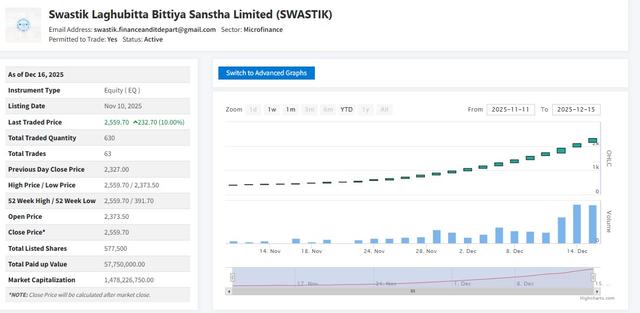Gold Imports Surge in Shrawan, UAE Dominates as Nepal’s Top Supplier
Author
NEPSE TRADING

Kathmandu – Nepal’s trade data for Shrawan, the first month of FY 2082/83 (Mid-July to Mid-August 2025), confirms once again that gold remains the country’s largest import commodity. According to the Department of Customs, Nepal imported over Rs. 1.66 trillion worth of gold during the month, with the United Arab Emirates (UAE) emerging as the leading supplier.
UAE Supplies the Bulk of Gold
Under HS Code 7108.13 (Gold), Nepal imported 100 kilograms (100,000 grams) of bullion from the UAE. The value of this shipment was approximately Rs. 1.526 trillion, generating around Rs. 152.6 billion in customs revenue for the government. With an effective tariff rate of 10%, this single shipment alone accounted for nearly 92% of total gold imports during the month.
In addition, under HS Code 7108.12 (Other unwrought non-monetary gold), the UAE supplied another 2,538 grams, valued at Rs. 35.2 million, with Rs. 3.5 million in duty payments.
Imports from Qatar, Saudi Arabia, and Hong Kong
Beyond the UAE, other countries also contributed significantly to Nepal’s gold imports.
Qatar supplied 2,423 grams, worth Rs. 34.5 million, contributing Rs. 3.47 million in duties.
Saudi Arabia exported 1,247 grams, valued at Rs. 18.1 million, generating Rs. 1.81 million in duties.
Hong Kong accounted for 724 grams, worth Rs. 10.2 million, with Rs. 1.04 million in duties.
The United States exported 662 grams, valued at Rs. 9.36 million, with duties of Rs. 954,000.
The United Kingdom supplied 654 grams, worth Rs. 9.22 million, contributing Rs. 945,000 in duties.
Other smaller suppliers included Thailand (413 grams), Malaysia (136 grams), Kuwait (176 grams), Bahrain (100 grams), Belgium (139 grams), Bhutan (100 grams), and Australia (45 grams).
Price Stability Across Partners
A striking feature of the data is the consistency in per-gram gold prices across countries. Most shipments of unwrought non-monetary gold (HS 7108.12) were priced between Rs. 13,800 and Rs. 14,500 per gram, closely aligned with global bullion rates.
However, the large bullion shipment under HS 7108.13 from the UAE came at a slightly higher landed price of Rs. 15,264 per gram, reflecting premiums associated with bulk consignments and logistics costs.
Significant Fiscal Contribution
Gold imports were also a major source of revenue for the government. In Shrawan alone, customs duty collections from gold reached nearly Rs. 166 billion, making bullion one of the most important contributors to fiscal income.
Yet, while gold imports boost government revenue, they simultaneously strain foreign exchange reserves. Since gold is a non-productive asset, it contributes little to industrial growth or exports, but adds significantly to the widening trade deficit.
Broader Economic Implications
Dependence Risk: With the UAE supplying over 90% of Nepal’s gold imports, the country is exposed to risks from supply disruptions, price fluctuations, or policy changes in the Gulf region.
Trade Deficit Pressure: Gold imports worth Rs. 1.66 trillion in just one month remain a leading driver of Nepal’s ballooning trade deficit.
Revenue Dependence: Customs revenue from gold provides an important fiscal cushion, but it also ties government income closely to fluctuations in gold demand.
Foreign Reserve Impact: Rising gold imports reduce foreign exchange reserves, creating added pressure on Nepal Rastra Bank’s ability to finance essential imports such as petroleum, food, and industrial inputs.
The trade figures for Shrawan demonstrate that gold continues to be both a blessing and a burden for Nepal. On one hand, gold imports—dominated by the UAE—provided the government with Rs. 166 billion in revenue, strengthening fiscal resources. On the other, the sheer scale of bullion imports worsens the trade deficit and undermines foreign currency reserves.
Economists stress that Nepal must move toward curbing excessive gold imports, diversifying exports, and promoting productive industries. Without such reforms, the country’s dependence on gold and its vulnerability to external shocks are likely to persist.



